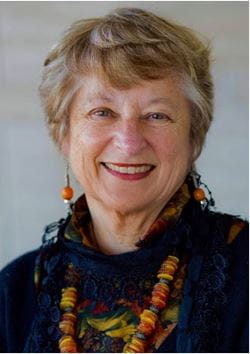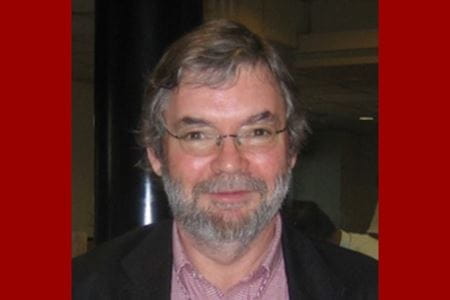The third Peter J. Roach Lectureship on Metabolism and Related Diseases will be held on Friday, June 6, 2025. Susan S. Taylor, PhD, distinguished professor of pharmacology, chemistry and biochemistry at the University of California, San Diego, and a member of the National Academy of Sciences in the United States, will present the lecture entitled “New Frontiers in PKA signaling.”
The lectureship will begin at 2 p.m. in the Van Nuys Medical Science Building (MS 326) and can be joined virtually via Zoom. Attendees are also invited to join a reception following the lecture at 3:30 p.m.
Peter J. Roach, PhD, was an Indiana University distinguished professor, IU Indianapolis chancellor’s professor and professor of biochemistry and molecular biology at the Indiana University School of Medicine who passed away on March 11, 2022. His wife Anna DePaoli-Roach, PhD, established an endowed lectureship in her late husband’s name to commemorate his scientific accomplishments and to help keep his memory alive for future researchers. The opportunity was made possible thanks to generous donations from several trainees, family members, colleagues and friends to the IU Foundation in Roach’s honor.
Throughout Dr. Roach’s career, he received many awards and accolades for his impact on the field of glycogen metabolism and its regulation, which led to outstanding contributions to the pathogenesis of Lafora Disease, a deadly childhood disorder. He was a strong believer in the value of basic research and published over 200 peer-reviewed papers and held the longest-funded National Institutes of Health grant at IU for 41 years. He was also a mentor to many students, earning international recognition for his approach to student training, with 18 students earning PhD or master's degrees and 20 postdoctoral fellows studying under his direction. A summary of Dr. Roach’s incredible contributions to science was published in Cell Metabolism in July 2022.
 Dr. Susan Taylor received her BA in biochemistry from the University of Wisconsin and her PhD in physiological chemistry from Johns Hopkins University. After a postdoctoral fellowship at the Medical Research Council Laboratory of Molecular Biology in Cambridge, England, she worked as a postdoc at the University of California San Diego where she joined the faculty and rose to the rank of full professor.
Dr. Susan Taylor received her BA in biochemistry from the University of Wisconsin and her PhD in physiological chemistry from Johns Hopkins University. After a postdoctoral fellowship at the Medical Research Council Laboratory of Molecular Biology in Cambridge, England, she worked as a postdoc at the University of California San Diego where she joined the faculty and rose to the rank of full professor.
She is a distinguished professor of chemistry and biochemistry, a distinguished professor of pharmacology, a member of the National Academy of Sciences and a past Howard Hughes Medical Institute Investigator.
She was president of the American Society of Biochemistry and Molecular Biology and served on the National Institutes of Health General Medicine Council and on the scientific advisory board of the National Heart, Lung and Blood Institute, National Institute of Diabetes and Digestive and Kidney Diseases, National Cancer Institute and National Institute of Child Health and Human Development. She is a member of the National Academy of Sciences, American Academy of Arts and Sciences, Institute of Medicine, National Academy of Inventors, and a fellow of the American Academy of Arts & Sciences. She won the Gavin Olin Medal from the American Chemical Society in 2001, the Federation of American Societies for Experimental Biology Excellence in Science Award in 2009, the Vanderbilt Prize in Biomedical Sciences in 2009, the Centennial Medal from the Biochemical Society in 2014, the American Society for Biochemistry and Molecular Biology Earl and Thressa Stadtman Distinguished Scientist Award in 2017, the American Society for Biochemistry and Molecular Biology Herbert Tabor Award in 2022, and was an International Union of Biochemistry and Molecular Biology Jubilee Award Lecturer in 2022.
Dr. Taylor’s research has always been well funded and has resulted in nearly 500 research publications in numerous high-impact journals. It has focused on the structure and function of protein kinases, in particular cyclic adenosine monophosphate (cAMP)-dependent protein kinase (PKA). A guiding principle for Taylor is that structure will lead to an enhanced understanding of function at both molecular and cellular levels, and this strategy has been validated repeatedly. Her research led to solving the crystal structure of the first protein kinase in 1991, which provided a template for this entire family of essential regulatory enzymes where mutations drive so many diseases. Understanding the molecular basis for function, characterizing this one protein kinase and its structure, function and dynamics, and translating that information to other related protein kinases continues to provide an ideal interdisciplinary platform for coupling innovative technological advances in computation and biophysics with exciting biological questions. In addition to having atomic level resolution, however, it is essential to know where these proteins, and, in particular, the functionally non-reductant isoforms of the PKA regulatory and catalytic subunits are localized in cells and tissues, and how function and localization change as a result of disease mutations. Her recent high-resolution imaging of PKA isoforms in the retina provides a window into the brain where 50% of PKA signaling is carried out by the poorly studied C-beta subunits. In parallel with static structures and tissue localization, it is essential to understand the dynamic and conserved features of these highly allosteric signaling machines. Her more recent work with Leucine-rich repeat kinase 2 (LRRK2), a large multi-domain protein kinase associated with Parkinson’s Disease, demonstrates once again how she has leveraged her knowledge of PKA to address other kinases.
